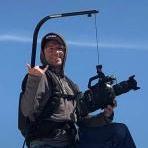Leaderboard
Popular Content
Showing content with the highest reputation on 03/06/2015 in all areas
-
I just need to rant a little and not give any new input probably, because this is just my favorite subject. First of all, bravo, Ed! “I didn't know what you couldn't do. I didn't deliberately set out to invent anything. It just seemed to me, why not? And there is a great gift that ignorance has to bring to anything. That was the gift I brought to Kane, ignorance.” - Orson Welles, in reference to still the greatest film ever made This is why I left school really. It wasn't a school with particular emphasis on film, which showed. it was zero to do with creativity and all to do with the terrible formula for making films the crappy way. One of our textbooks was Your Screenplay Sucks - a book written by a man who has written maybe a handful of unknown, low-rated feature length screenplay that have been made... one of them was Ernest Rides Again. I wish I was kidding. . I had never been more inspired to not care about what I was doing. I once made a mistake of writing about something I cared about for her class, and since stuck to bullshit since that's what it would become anyway. She disrespected innumerous amazing films in our class by saying an aspect involved in it was horrible. Along with many things, she criminalized montages altogether.. which is literally a term for "editing". It can be used in sort of an overdone "cheating" fashion perhaps.. but it's clearly an insane set of parameters. Since leaving school, I buckled down and wrote my second longer screenplay, which I'd had in mind for years but couldn't touch because I was kept so busy with nonsense. I absolutely love it, and I'm satisfied to say in that class it would have been torn to shreds. It may not end up feature length even! Which I love! That's freedom! Because no one wants that. Let's not conform to an standards by adding rubbish to your film so that it's long enough, nor keeping a short film short enough that it can hold the attention of the audience by falling into a different formula. "A movie tries to pacify people by keeping it going for them so that it's sheer entertainment. Well, I hate entertainment." - John Cassavetes, my favorite director. And with this mindset he has made the most entertaining, amazing films. When making Faces he and his team didn't know if it would end up ten hours long. They made it anyway, expecting zero profit, because screw everything. There are legitimately good 5 hour long films which people won't give a chance. Let's do what's right for the story. The films I've written had been entirely formed in my head before I started typing. And it wasn't active brainstorming. They just happened and they mattered. Not that every film has to be developed that way, but shouldn't we all be that lucky! and then people come in to criticize and change things. But if my professor could have changed Citizen Kane, she would have. We'll end up with bad films if we don't try to change something when we see a "flaw", but we'll also end up with amazing films. Sidney Lumet is fantastic, but could have never made Kane in his studio setting. And Welles made KANE, but also made some real stinkers, because he fought for that freedom. He would have been much more crazy if he could have, and I really wish he could have.3 points
-
I am very much against recommending a Blackmagic when you first start out. The sheer volume of support gear you need to make it work is a gigantic hurdle. I think at this point it's actually better to buy a used Hacked GH2/GH3 and buy a couple lights and lenses with your money.2 points
-
My latest short film!!! "The Quiet Escape." Shot on the Samsung NX1 with 35mm Nikon AIS f2 lens and Leica R 100mm lens - one shot. Used Filmconvert and Gorilla Grain to treat it in Davinci Resolve. Came out so nicely. THANK YOU EOSHD and Andrew Reid for this camera!! Minus 5 contrast Minus 3 saturation Minus 12 (all the way) sharpness Before Gamma DR existed. The olden days.1 point
-
Olympus E-M5 Mark II - love and hate at first sight
Don Kotlos reacted to Portlandia for a topic
Putting video quality aside (which from what I see is better than the original E-M5), this is the best video tool I think Olympus has produced. In addition to more frame rate options, there are more exposure and control options. Focus peaking is available, works well, and is far more responsive than on any other Olympus camera I've used to date (Briefly owned the E-M1 and recently "test drove" an E-PL7). The rear screen is sharper and the touch implementation more responsive and accurate than previous Olympus cameras. Regarding the EVF, I find it to be the sharpest of any Olympus version I've used (E-M5, E-M1, VF-4 accessory). Andrew found it worse, perhaps a bad implementation on his unit? Add to that better stabilization, a mike input, and if the ability to add a headphone jack (for a price), it is clearly checks many of the boxes. If the video quality is worse than the E-M1 perhaps its like getting the sides, but forgetting the main course. I would guess when its all said and done we'll see the video quality will be a wash (if not better) than the E-M1, so more like getting chicken when you ordered the steak (apologies to vegetarians and vegans) Either way nothing's perfect. Pick your poison.1 point -
Don't worry so much about the iso and look more at the exposure meter on your camera. If shooting in log overexpose by at least 1 stop, if shooting in any other profile (not log) then expose about a quarter less then proper exposure. I've shot perfectly clean 50-100k iso images and didn't really notice noise until after 100k, but up until at least 50k iso it's perfectly clean in Full Frame mode. Remember the camera can do in noise reduction, I generally think it works great as it only kicks in when it needs it. I would easily push the iso to 50k and have perfectly clean image. I shot this video around 100K iso at night (indoor train scene) and the intro shots and last final shots (night) of the video were around 200K iso (which is the max I would use) Peace1 point
-
I was kind of thinking the same thing. But Samsung is a little vague on its spec sheet, if you read Dpreview people are discovering the 120fps option and Samsung only lists a Slow/Fast mode in the video specs. Perhaps the crop is an updated option since the processor can do full sensor readout, Samsung seems to be continually discovering more features that are made possible by the considerable processing power in the NX1. I'm still holding off ordering though. I've seen the 240fps screenshot too, there has to be another big NX1 update coming. The more I shoot with it, the more I like it. My NX1 just replaced the A7s, its so much faster and more responsive, better ergonomics and much easier to set up. I decided 4k internal was better for me. If the NX500 is a dud, there's always the LX100.1 point
-

SLR Magic Anamorphot 2x on GH4 (16x9 center crop)
1tkman reacted to Zak Forsman for a topic
Shoot was conducted with three Nikon AIS taking lenses: 35mm f/1.4, 50mm f/1.2 & 85mm f/2. There are a few close-ups in there where I used their new +1.8 diopter too.1 point -
Yeah, although it's availlable practically everywhere I look (I went into a store close by just now, they had it), the only place it's not availlable is where I pre-ordered (silly me, I thought that would put me ahead). I think it's the universe trying to tell me something. So I'm going to listen and told them they could just go ahead and cancel it...1 point
-

nx500 4k crop mode
samuel.cabral reacted to Geoff CB for a topic
I actually hope it's not mentioned because the crop is an option in camera that was left on at that expo.1 point -
I see things seem to have gotten a little hysterical on this thread regarding the E-M5 mark ii! I've had a decent look at what little material there is on the web and have made a few observations. Have people seen the new stabilisation comparison between the E-M5 mark ii and a GH4 posted on 43rumors.com recently? Pretty incredible really how good the Olympus stabilisation is in comparison. This is indeed what I think Olympus mean by cinematic quality images in their advertising blurbs - cinematic quality 'motion' in images (after all almost any mention of video in their advertising is associated with the mention of stabilisation). Apart from the stabilisation, one of the first things you notice is indeed the added crop on the E-M5. I doubt the crop factor is as much as 2.7x though, considering the GH4 was shooting 1080p and not 4K. I'm sure this added crop is a technical constraint required to give the degree of sensor shift needed for effective stabilisation of the amount of movement generated between the frames of video footage. After all, a person trying to keep still taking a still frame is a very different 'kettle-of-fish' to a video camera on the move. The oversize of the standard m43 lens image circle as opposed to the used area of the m43 sensor probably allows enough shift to compensate for the shake/movement produced when taking a still, but the added movement generated between frames of moving video probably requires this extra crop to be effective. With all the talk about moire and aliasing the other thing that surprised me with this footage was that I didn't notice any on the E-M5 side but did in the windows of the distant buildings on the GH4. Having said this though, the compression of this footage is appalling, making it difficult to say anything much. One thing I did notice though that is interesting, is the motion cadence of the E-M5 footage is extremely different from that of the GH4 even though the frame rate settings etc. are the same. Although the video from both look sharp when playing, when you pause the frame the GH4 frame looks much sharper due to the E-M5 footage containing much more motion blur. It looks like the difference between using a 180 degree and a 360 degree shutter. Perhaps this explains some of the disparity in results between different people's testing? If one test was from a tripod the frame grab from the E-M5 would appear sharp but if the frame grab was from an image that was handheld using stabilisation it may contain a bit more motion blur making it appear softer. Looking at Robin Wong's test I must say I agree with him that the E-M5 mark ii footage looks sharper and has much better dynamic range than the E-M1 footage. The other curious thing I notice (and others noticed this too in the bath towels test posted here) is that the E-M5 mark ii footage appears to have greater depth of field using the same lens at the same setting as opposed to the E-M1. Especially look at the dials on the top of the close up of the camera - what's going on here? I must say also the look of some of the videos posted on the web from the E-M5 mark ii seem really good. I actually downloaded the ungraded sample footage that John Brawley shot and cut this material into a timeline of shots I'd recently filmed for a commercial on my A7s. While the scenes were obviously completely different, I thought the material actually cut very well - it wasn't like I was noticing a big resolution hit every time I cut to the Olympus footage and that was viewing on a 4K monitor. I just think 'horses-for-courses'. I'd potentially use the E-M5 for tracking and movement shots within sequences of material shot by other cameras. I probably wouldn't mix static shots with those from another camera like the A7s within the same scene. But having said this, that's generally standard good practise anyway because different cameras produce different colour responses (especially to skin tones that we really notice), making the footage extremely difficult to grade.1 point
-
Olympus E-M5 Mark II - love and hate at first sight
Don Kotlos reacted to Rinaldo for a topic
Some disagree.... http://robinwong.blogspot.com.br/2015/03/olympus-om-d-e-m5-mark-ii-vs-e-m1-video.html1 point -

Please recommend a free video converter for anamorphic video
ken reacted to John Palmer for a topic
I use mpeg streamclip. its free and works pretty well. It allows you to choose a custom frame size. There is also another called handbrake1 point -
Right on Luke. What's important isn't memorizing the rules, it's understanding why the rules exist, then we learn they're not rules at all, only guidelines we've learned that in many cases can provide predictable results. When money is on the line, everything changes- less risk tends to be taken, stress is higher, people need to pay rent, food, support their families, etc. It seems the best art is created from passion and not for money. I wondered why so many artist/designers would get upset when as a manager and developer I challenged their designs for usability (Cognitive Science concepts). After doing additional research, I found many of them were simply copying 'cool designs' without really knowing why they were good or not. In many cases, while the designs looked cool, the functionality greatly suffered. When challenged to make changes to improve usability, since they didn't really understand the design they had copied, they didn't know how to correct the flaws in usability, and thus became defensive as the jig was up. I'm totally cool with copying good designs, everyone does it, however its important to know why the designs are good and only copy the designs for the right reasons. These concepts apply to filmmaking as well: it's cool to copy what works and/or break the 'rules', so long as we understand why we're doing it.1 point
-

[The Quiet Escape] A short film I shot on the Samsung NX1 - B&W and Color. 4 min.
Neumann Films reacted to jcs for a topic
Regarding rules for creating art: while I agree that there are no rules, understanding why the 'rules' are commonly used is helpful. Then as a creator, one can use the rules as tools or choose to ignore them. Rules are technical, and technology by definition is a tool. Like brushes, paint, and canvas. In a prior thread, we discussed 'winging it' vs. 'following the rules of traditional filmmaking'. Ed's Charlie Chicken was pretty good, though I could see Ed's concepts going a lot further with a little less winging it and a little more planning. It's clear Ed spent a lot of time with the script and overall design of his latest creative work, and it shows a dramatic improvement in The Quiet Escape. Now that I'm back doing tech-work for my day job, I'm itching to get back to shooting something creative, but I won't roll camera until we have a solid story, script, and basic shots planned ahead of time. There are (at least) two way to enjoy art: by experiencing it without thinking, typically allowing our minds to generate emotion/feelings and allow it to flow with no analysis, and more or less the complement: analyzing the art for structure, purpose, color, flaws, etc. Both methods are valid and the same work can experienced differently with repeated interactions. Our perceptions change even from what just happened in our lives right before or after experiencing the art. Sometimes a work we didn't like is experienced again years later and our appreciation flips 180 degrees: from hate to love and vice versa. Marginalizing one form of 'art experiencing' over the other is a form of extremism and narrow-mindedness. All forms are valid, and it depends on each of our own unique perspectives at the time of the experience. Understanding this allows us to have a sort of 'art empathy' for others' reaction to art which may differ from our own experience.1 point -
Ed I enjoyed your piece as well, really connected with it and your raw true thoughts, the swearing part and just plain what we really need as humans. Thanks to Andrew for helping me find this piece.1 point
-
I got my NX1 just this week and I'm already loving it. The H.265 as Andrew has said, is a bit of extra hassle, but I anticipate that being temporary. Sooner rather than later, H.265 should be the norm, and then it will make things much easier. Storing master files certainly is I've gotta get adapters for my zeiss c/y though. After watching this, that Nikon is lovely! The AF from the kit lens is astounding, and will be invaluable for my gimbal work, but nothing beats some good vintage glass. your film captured a certain sentiment towards cities... Especially New York, that I think everyone feels if they've lived there. It's a real struggle. I love living in the woods on a river in northern Minnesota, with my dog and my woodstove. But there's no video work here, I have to drive to the twin cities for that, and it makes finding work difficult.1 point
-
Olympus E-M5 Mark II - love and hate at first sight
Tim Fraser reacted to DPC for a topic
At the end of a day testing cameras for a shoot tomorrow, all I can say is that it's not a straightforward as I thought when I posted this morning's test. In fact, against my GH4 and 5D MK III, the EM5 Mk2's skin tones look really good. The colours are great and the files are very easily tweaked. Downloading John Brawley's ungraded files is quite informative, by the way.1 point -

[The Quiet Escape] A short film I shot on the Samsung NX1 - B&W and Color. 4 min.
Ed_David reacted to Andrew Reid for a topic
Absolutely superb Ed. Love the cinematography, the mood, the idea, the sound, the writing, it's all spot on. Two lines in particular, the one about your dog knowing something "we're still trying to figure out" and the closing lines about New York - utter magic. Will stay with me for a long time because it's exactly how I feel about Berlin at the moment.1 point -
Interesting link showing some common grading / timing looks, or pitfalls depending on how you look at it. http://www.flicks.co.nz/blog/film-is-a-harsh-mistress/making-the-digital-grade/1 point
-
If it is going to be on TV dose it not have to be legal safe video? just popped both your images into my timeline looking at them with a scope and both of them are not broadcast safe for television. So if you turn it in like that the station will auto crush it before it is broadcast to make it safe so it will look nothing like you graded it like it will most likely be much darker with crushed blacks. Many times grading can mess up the video making it not safe for broadcast unless you watch a scope as you grade. I see so many videos graded to look a special way on vimeo and youtube but none of them would pass that way to air on broadcast tv at least in the US. I think many film makers starting out never think about that when editing and grading is it safe for TV if my film ever makes it that far. Or that may stop it from making it that far.1 point
-
The blackmagic has a horrid screen (need to buy an EVF/Moniter), horrific audio inputs (external recorders), poor ergonomics (Shoulder rig needed for handheld) He said his budget is $1500, you are not going to get a BMCC with the gear needed to use it in common situations for under $1500. GH2/3 is plenty of camera to start shooting on.1 point
-
I do big commercials. I'm on one right now. I also have an Emmy and just was in American Cinematographer. And brand loyalty is a big thing. We mostly use Arri HMI lights. Joker sometimes but Arri because we know Arri makes a damn fine light with the M90 or M18 - Joker 1600s never took off. I use the best camera for the job - but I have to have long talks with the producer sometimes about that. For instance, I just did a Lincoln commercial in Dubai and we shot on the Sony F55 - not the Arri Alexa or Red Epic Dragon. Why? - Got that question so many times. Alexa was too heavy - it was 16 hr steadicam days in the 110 degree weather - and Red Dragon - not good in heat - but I got slack - because Alexa and Red have better names. I also shoot dog videos on smaller cameras. I own the NX1 and the Sony A7S - and I work with film and own 2 f35s and red one mx and use alexas and red dragons and arri 416 and 435 on jobs - and there is so much goodness to come from using a small lightweight camera. So much wonder and beauty from using these little guys - it reopens wonder and ease and has improved my color grading knowledge so much. It's such a pleasure to have a lightweight camera where it is fun again, where it's not physically exhausting to reframe. So there is a differing opinion from me. Traditional DPs are now dealing with the new era, where young upstarts like me can rise up without being a loader, 2nd, 1st, , cam op, then DP. Or electric, best, gaffer then DP. I became a DP in just about five years. I was an assistant editor for 5 years going down the editing path and I switched because I was already shooting docs. And there is nothing wrong with that. My sense of lighting took longer to develop but my sense of the emotional space was more developed. Getting smaller moments. There is no right way to be a DP. Because I am so unconventional, I bring a childlike wonder to filmmaking. I bring a different perspective and wonderment to how I work - more innocence, more in the moment. There is no one right path. Older established DPs I have nothing but respect. Maryse Alberti, Gordon Willis, Raul Coutard, Jordan Cronenweth, Storro, Michael Chapman, Conrad Hall, Lance Accord, Nestor, Wexler - nothing but respect. Also the DP of IDA - the most beautiful film I saw in the past 4 years, was a cam operator - first time DP. The director said he was so good because he had no ego. So next time you watch an unlit video of a dog - think about how much fun the DP was having. How casual it was, and how beautiful that can be.1 point
-
1 point







